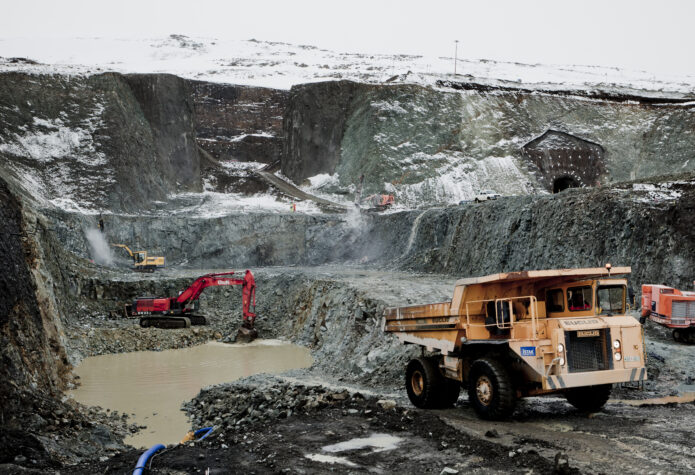Powering Iceland to recovery

The key to revitalising Iceland’s economy lies in the country’s rivers and geothermal waters. With NIB financing, Iceland’s main energy company Landsvirkjun is constructing a new hydropower plant which will feed clean electricity to power-intensive industries on the island.
“The Búðarháls hydropower plant is Landsvirkjun’s first project after the economic crash,” says Hörður Arnarson, CEO of Landsvirkjun.
“Renewable energy is crucial for the revival of the Icelandic economy and NIB’s support for the project is not only important to Landsvirkjun but to the country’s economy as a whole,” he continues.
To realise Iceland’s potential in renewable energy, capital-intensive and long-term projects are needed. In 2011, NIB agreed with Landsvirkjun on a USD 70 million loan with a 16-year maturity for a large-scale hydropower project.
Renewable energy generates economic power
Mr Arnarson believes renewable energy will overtake fish as Iceland’s most important natural resource. Production of renewable energy in Iceland is extremely cost effective and customers in Europe are expected to be willing to pay extra for clean energy in the future.
“Iceland is unique. It has the highest amount of electricity per capita in the world-and it is all renewable,” he says.
Iceland is the only western country that produces all its electricity from emission-free and sustainable natural resources in the form of geothermal energy and hydropower. The economy is to a large extent based on industries that are fuelled by renewable energy.
Iceland now exports its clean energy via aluminium produced with renewable energy. Landsvirkjun is currently examining the possible export of renewable energy via a sub-sea cable to Europe. The company is evaluating the feasibility of building the world’s longest submarine electric cable and addressing potential business models, markets and congestion management.
“Today we are producing five times more electricity than Iceland needs. We aim to double that and provide the surplus energy to power-intensive industries. This will have a huge impact on Iceland’s economy,” says Mr Arnarson.
He foresees that in 15 years time, the electricity industry will have the same impact on Iceland’s economy as oil has had on Norway’s.
“Our aim is that profit from electricity production should represent at least 6% of Iceland’s GDP.”
Gulliver’s travels
The construction site of Búðarháls hydropower project brings to mind Gulliver’s observations when washed ashore on the island of Lilliput. Massive machines, weighing several tonnes, look like ants on an anthill, as they are digging away to create the 4 km long tunnel and reservoir needed to get the water flowing into the planned turbines in the power station.
Up to 300 people will be working at the site during the peak period, and by 2014 the turbines at Búðarháls will produce 585 GWh of electricity annually. This approximately equals the annual electricity consumption of Reykjavik, the capital city of Iceland.
“All the electricity used at the construction site is renewable and comes from one of Landsvirkjun’s other power stations along the same river,” says Guðlaugur Þórarinsson, project manager for the Búðarháls hydropower project.
Untapped potential
Hydropower projects are about taming nature in order to create much needed CO2-free energy. However, in the case of Búðarháls, the Tungnaá River and the Köldukvísl River are already turning turbines in four hydropower plants.
“The impact on the environment is small with the Búðarháls project. It is a matter of utilising the part of the river which is already used for electricity production,” Mr Þórarinsson points out.
The area of the dam and hydropower plant is mostly uninhabited. No protected areas will be affected by the project and the impact on the fishery is insignificant. Landsvirkjun will compensate for the vegetated land that will be covered by the dam by increasing vegetation in other areas.
“Landsvirkjun has analysed all possible risks involved with hydropower plants in general. Of all the risks involved in such large-scale, long-term projects, including environmental risks, reputational risks and safety risks, one of the biggest risks is the financial risk,” continues Mr Þórarinsson.
The Búðarháls hydropower project was initiated in 2002, but then put on hold, only to be brought to life again with the help of NIB financing in 2011.
Catalyst
Energy projects help kick-start other enterprises-those that receive the energy-further multiplying the impact on the economy. The clean electricity produced at the Búðarháls hydropower station will be used for energy-intensive aluminium production and a silicone plant.
Power intensive industries such as the aluminium industry have traditionally been the recipients of Iceland’s cheap energy, but recently more segments are joining the race for the best electricity prices in Europe, including the silicone industry, chemical companies and data centres.
“The investment of the aluminium industry is two-and-a-half times higher than Landsvirkjun’s. This project will get the economy rolling again,” Mr Arnarson concludes.

